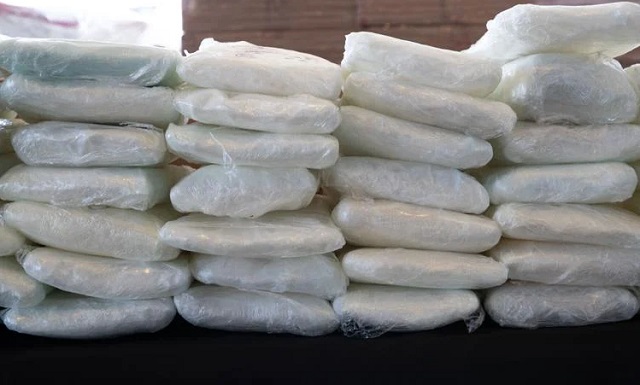Uncategorized
Dolce&Gabbana fiasco shows importance, risks of China market

BEIJING — Don’t mess with China and its growing cadre of powerful luxury consumers.
Dolce&Gabbana learned that lesson the hard way when it faced a boycott after Chinese expressed outrage over what were seen as culturally insensitive videos promoting a major runway show in Shanghai and subsequent posts of insulting comments in a private Instagram chat.
The company blamed hackers for the anti-Chinese insults, but the explanation felt flat to many and the damage was done. The Milan designers
Then, as retailers pulled their merchandise from shelves and powerful e-commerce sites deleted their wares, co-founders Domenico Dolce and Stefano Gabbana went on camera — dwarfed against the larger backdrop of an ornate red wall-covering — to apologize to the Chinese people.
“We will never forget this experience, and it will definitely never happen again,” a solemn-looking Gabbana said in a video statement posted Friday on social media.
The apology video , and the sharp public backlash that demanded it, shows the importance of the Chinese market and the risks of operating in it. More broadly, it highlights the huge and still-growing influence of China, a country that cannot be ignored as it expands economically, militarily and diplomatically.
These trends are intertwined in frequent outbursts of nationalist sentiment among consumers who feel slighted by foreign brands or their governments. It’s not the first time a company has apologized, and it surely won’t be the last. Mercedes-Benz did so in February for featuring a quote by the Dalai Lama on its Instagram account.
For Dolce&Gabbana, it could be mark the end of its growth in China, a crucial market for global luxury brands that it has cultivated since opening its first store in 2005 and where it now has 44 boutiques.
“I think it is going to be impossible over the next couple of years for them to work in China,” said Cary Cooper, a professor of organizational psychology and health at Manchester University in England. “When you break this kind of cultural codes, then you are in trouble. The brand is now damaged in China, and I think it will be damaged in China until there is lost memory about it.”
London-based Brand Finance consultancy estimates that the scandal could wipe up to 20
That could shake Dolce&Gabbana’s financial health. The privately held company does not release its individual sales figures. But Chinese consumers are responsible for a third of all luxury spending around the globe, according to a recent study by Bain consultancy. That will grow to 46
“Without China, the hinterland for growth, D&G will obviously be in a weak competitive position and in danger of being eliminated,” the Chinese business magazine New Fortune said in a social media post Sunday. “This is one of the major reasons why D&G finally lowered its head. They really cannot survive without the Chinese market.”
While Dolce&Gabbana has displayed a knack for social media engagement, inviting millennial influencers with millions of collective followers to sit in their front rows or walk in their shows, that engagement has been a double-edged sword. Pop idol Karry Wang, who has drawn hundreds of screaming Chinese fans to the designer’s Milan showroom for season runway shows, was one of the first to disavow the brand, saying he was ending his role as Asia-Pacific brand ambassador.
Dolce found himself on the defensive several years ago after Elton John lashed out for comments that suggested he did not support gay couples using surrogate mothers to have children. At the time, more than 67,000 tweets urged #boycottdolcegabbana, while Courtney Love vowed to burn her Dolce&Gabbana garb and Martina Navratilova pledged to trash her D&G shirts.
Gabbana, who has 1.6 million Instagram followers, faced a more contained backlash earlier this year when he responded to a collage of Selena Gomez photos on Instagram with the comment, “She’s really ugly.”
Celebrities took to social media Wednesday to blast Dolce&Gabbana and said they would boycott the show, which was
The rapid escalation into a public relations disaster was fueled by social media. Individuals posted videos of themselves cutting up or burning their Dolce&Gabbana clothes, or picking them up with chopsticks and putting them in the trash. A parody of the offending Dolce&Gabbana videos, which featured a Chinese woman using chopsticks to eat pizza and an oversized cannoli, shows a white man trying to eat Chinese food with a fork and knife. At least three rap bands took up the cause with new songs.
“Companies that don’t respect us don’t deserve our respect,” Wang Zixin, team leader of CD Rev, a nationalist rap band, said by phone from Chengdu, the capital of Sichuan province. Its new song had been viewed more than 850,000 times on Weibo.
“We hope people will remember companies that have ever insulted China, and not forget about them when the fallout passes,” Wang said.
That sense of pride reflects a nationalism that has been encouraged by the government, often in disputes China has with other countries over other foreign products.
Sales by Japanese automakers plunged in 2012 amid tensions between islands both countries claim in the East China Sea. The clash also illustrated the complexity of Chinese sentiment: Industry analysts said buyers didn’t want to be seen in Japanese auto showrooms but went ahead with planned purchases once tensions had passed.
More recently, several foreign companies ran afoul of Beijing’s insistence that they explicitly refer to Taiwan, a self-governing territory, as part of China. Many complied, showing how important the Chinese market has become.
Delta, American and other airlines agreed to refer to Taiwan as part of China, and Zara now says “Taiwan, China” on its
Actor Richard Gere, a supporter of the Dalai Lama, has told The Hollywood Reporter that movie studios balk at hiring him for fear of an official or public backlash that might affect ticket sales in China.
It remains unclear whether the D&G mea culpa video will stop the backlash — or if it will have implications for Made-in-Italy at large. The scandal erupted as Italy’s high-end furniture and design companies were making an annual presentation in Shanghai and as Miu Miu, the Prada Group’s little sister line, showed its cruise line in Shanghai.
Italian designers have so far refrained from comment. Dolce & Gabbana has remained conspicuously outside of the Italian Fashion Chamber, which organizes fashion weeks and acts as a lobby for the fashion industry.
Brand Finance’s luxury expert, Alex Haigh, said the scale of the Chinese reaction risked contagion in other markets, but that the brand could get ahead of the scandal if it makes sincere change. “They have made a big storm for themselves,” he said. “They need to wait a few months, and potentially do something like Volkswagen, when it had the emission scandal and repositioned itself as a more environmentally friendly electric-vehicle-first brand. Sometimes these issues can be a focal point for change.”
Italian commentators mused whether the Dolce&Gabbana protests were truly spontaneous or if there was some level of government control behind them. The government has publicly said the spat had no diplomatic element and would not comment.
“Anywhere in the world, an entrepreneur can make a mistake, use inappropriate language. Usually it is the consumers and the market to decide the seriousness of the
___
Barry reported from Milan. AP journalists Joe McDonald and Dake Kang and researchers Henry Hou and Jiawei Chen contributed to this report.
Ken Moritsugu And Colleen Barry, The Associated Press
Uncategorized
RCMP recruitment failure has Alberta advocacy group calling for Provincial Police Service

News release from Free Alberta Strategy (A Strong And Sovereign Alberta Within Canada)
“Make no mistake, we are paying for these services that we aren’t receiving. Alberta’s taxpayers are paying tens of millions of dollars for nearly 400 vacant RCMP officer positions – for boots that are not on the ground.”
A recent report from the Royal Canadian Mounted Police (RCMP)’s independent Management Advisory Board had findings that are nothing short of alarming:
“Federal policing has now arrived at a critical juncture of its sustainability, which present risks for the national security and safety of Canada, its people, and its interests,” says the report.
After over a year of diligent study, the Board has been tirelessly firing off flares, signalling to all who will listen: the very foundation of our national public safety apparatus may be at risk of faltering.
This is doubly problematic because, as you well know, the RCMP is also responsible for boots-on-the-ground policing in large parts of the country, including many rural and remote areas – including in Alberta.
Rural crime has been a longstanding issue in Alberta, and social disorder continues to make headlines nightly.
Alberta Minister of Public Safety, Mike Ellis, took to social media platform X (formerly known as Twitter) to express his opinion:
“The independent report finds the RCMP has struggled in recent years to recruit and retain regular members, a problem that’s particularly acute in federal policing. This is not about the hard-working men and women on the frontline: they are doing everything they can. The reality is the RCMP do not have enough officers to police communities in Canada effectively.”
Ellis has been ahead of this story for months now.
In March, Ellis stated that:
“… on average, Alberta has an RCMP officer vacancy rate of 20 per cent. This means that Alberta is only being served by 1,522 of the 1,911 RCMP officers that the federal government has authorized for Alberta.”
“Make no mistake, we are paying for these services that we aren’t receiving. Alberta’s taxpayers are paying tens of millions of dollars for nearly 400 vacant RCMP officer positions – for boots that are not on the ground.”
The consequences of this capacity crisis are far-reaching.
Not only does it jeopardize the safety of Albertans, but it also undermines the credibility of Canada’s federal police force on the international stage.
With limited resources and personnel, the RCMP’s ability to address pressing national and global security concerns is severely compromised.
The Management Advisory Board, created in 2019 by the federal government to provide external advice to the RCMP commissioner, set up a task force in the fall of 2022 to study the federal policing program.
Overall, the report says budget and personnel shortfalls have left the RCMP “operationally limited,” restricting the number of cases it can take on annually.
Here are some more highlights from the report:
“Canada and its people have already begun to see the repercussions of the federal policing program being stretched thin.”
“Federal policing’s overall eroding capacity may have implications for the credibility of Canada’s federal police force and its investigations on the international stage.”
“Ultimately, this may influence Canada’s overall approach and standing in international politics, including its ability to advance global priorities.”
Clearly, we cannot afford to wait any longer.
Municipalities can ease the burden on our national security services by establishing municipal policing.
Several cities in Alberta already have their own police authorities, and the provincial government is providing funding for others interested in exploring this option.
Grande Prairie is already in the process of establishing their own municipal police service.
No word on how many other municipalities have taken the government up on their offer.
Unfortunately, President of Alberta Municipalities Tyler Gandam (also Mayor of Wetaskiwin) is featured prominently on the National Police Federation’s “Keep Alberta RCMP” website.
Interestingly, the Keep Alberta RCMP website doesn’t mention the fact that the advisory board even exists.
It doesn’t mention the report.
The notion that our federal policing infrastructure teeters on the brink of instability while Gandam appears to be asleep at the wheel, is deeply disconcerting.
The safety and security of Albertans must remain our top priority.
We cannot afford to wait any longer.
The time has come for the province to take swift and decisive measures to bolster policing capabilities in Alberta.
It’s time for Alberta to seriously consider the establishment of an Alberta Provincial Police Service.
It has been one of the core tenets of the Free Alberta Strategy.
If you agree, please reach out to your municipality and ask them to take steps to protect your community.
Together, we can keep Alberta safe.
Regards,
The Free Alberta Strategy Team
P.S. We’re hoping you’ll consider contributing to our cause. Your generous donation helps us make a positive impact in our community. No need to worry about any hold-ups or threats here. We’re just passionate about making a difference, and your support goes a long way in helping us achieve our goals.
Uncategorized
Making Alberta a geothermal energy leader

Eavor announces it’s the #1 geothermal energy startup company in the world – January 2024
Alberta is creating Canada’s first geothermal test site to advance drilling innovation, reduce emissions and create jobs.
Geothermal energy uses naturally occurring heat within the earth to heat water and buildings and generate power, with few emissions or environmental impacts. Alberta has vast pockets of heat below ground, making the province Canada’s geothermal leader, but testing and developing new technologies can be a barrier for many companies. Unlike the United States, Japan and other countries, Canada does not currently have an open-access test site to help spur innovation.
Alberta is taking the first steps to create a new Alberta Drilling Accelerator. This groundbreaking facility would be the first of its kind in Canada, establishing Alberta as a global hub for geothermal technology. This will drive new innovations in geothermal and other clean energy projects that can reduce emissions and power communities around the world.
To kick-start the project, the Alberta government is investing $750,000 to conduct a feasibility study led by Calgary-based Eavor Technologies and other stakeholders. The study is the first step in assessing the proposed facility. It will include identifying a site, business planning, research on the governance model, an economic impact analysis and stakeholder engagement that will lay the groundwork for the initial planning stages of the project.
“Alberta has been a global energy leader for more than a century, renowned for our skilled workforce, innovation and one of the largest oil and gas reserves on the planet. The proposed Alberta Drilling Accelerator presents enormous potential to help our province lead the next wave of energy projects here at home and around the world that reduce emissions, create jobs and enhance energy security.”
The Alberta Drilling Accelerator would help companies test out and develop new geothermal drilling techniques or technologies to reduce emissions and drive growth across the clean energy sector. It would be an open-access, technology-agnostic drilling test facility capable of drilling in challenging environments, including deep depths, high temperatures and different rock types.
The accelerator also would help speed up the development of carbon capture, utilization and storage; helium; critical minerals; and other clean technologies and commodities that rely on Alberta’s drilling sector. All of this helps attract investment and bring new technologies to scale in Canada.
“With cumulative geothermal investment poised to reach $1 trillion by 2050, a geothermal arms race is very much underway to commercialize novel drilling techniques that accelerate geothermal development – exhibited by testing facilities in the United States, China and Iceland. As Canada’s first geothermal test bed, the Alberta Drilling Accelerator will help bring geothermal technologies to scale, supporting companies like Eavor. We commend the Government of Alberta for this bold initiative.”
“We are proud to witness Eavor, a CDL-Rockies alumni company, create new opportunities for innovators like themselves to advance the adoption of energy transition technologies like geothermal. The Alberta Drilling Accelerator will further solidify Alberta’s position as a leader in the global sustainable energy landscape.”
If the feasibility study shows the facility is economically and environmentally viable, and if the project is approved by the Alberta government, the facility will start taking shape at the selected site and drilling could start as early as 2025.
“Canada is home to the most advanced drilling technology in the world. Not only do our members support the responsible development of oil and gas, but we are integral in the extraction of new energy resources like geothermal and critical minerals. Our workers are at the epicentre of Canada’s energy transformation. Our people, technology and processes are leading the way towards a more diverse energy future. The Alberta Drilling Accelerator is a government-enabled policy approach to expand Alberta’s drilling capacity and reach its full potential as the world’s most diverse and technologically advanced producer and exporter of sustainable energy and critical minerals.”
“The Alberta Drilling Accelerator is a testament to Alberta’s innovative and entrepreneurial spirit. Leveraging our oil and gas sector expertise, Alberta is poised to become the global leader in developing new geothermal technologies that will play an integral role in reducing emissions while supporting job creation.”
Quick facts
- The Canadian Association of Energy Contractors estimates that one active drilling rig, whether drilling for natural gas or geothermal, creates approximately 220 direct and indirect jobs and
$1 million in tax revenue. - In 2019, Eavor received $2 million in provincial funding through Emissions Reduction Alberta and Alberta Innovates for the world’s first closed-loop geothermal system.
Related information
-
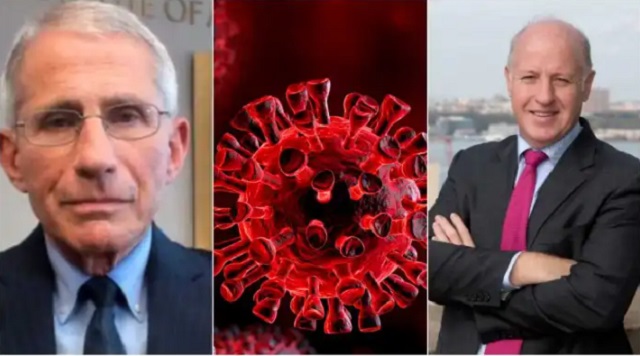
 COVID-192 days ago
COVID-192 days agoCOVID Lab Leak: Over four later, EcoHealth Alliance funding is finally suspended
-
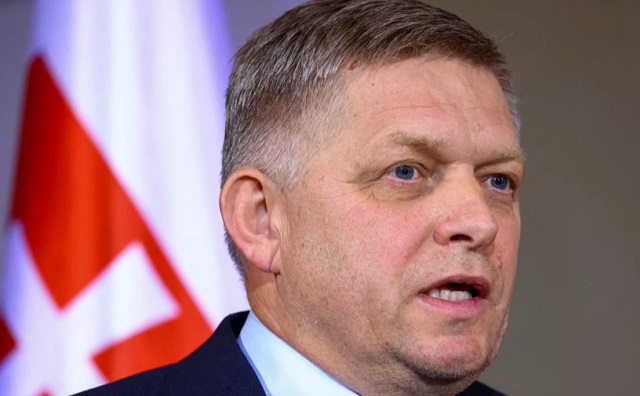
 Crime2 days ago
Crime2 days agoSlovakian prime minister who opposed WHO Pandemic Treaty shot in assassination attempt
-
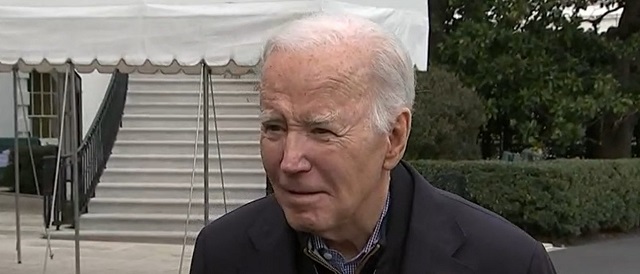
 Censorship Industrial Complex2 days ago
Censorship Industrial Complex2 days agoJim Jordan Exposes Biden’s Censorship-Industrial Complex
-

 conflict2 days ago
conflict2 days agoWhite House Reportedly Worried About Russia’s Sudden Momentum Months After Biden Declared Putin ‘Already Lost’ War
-
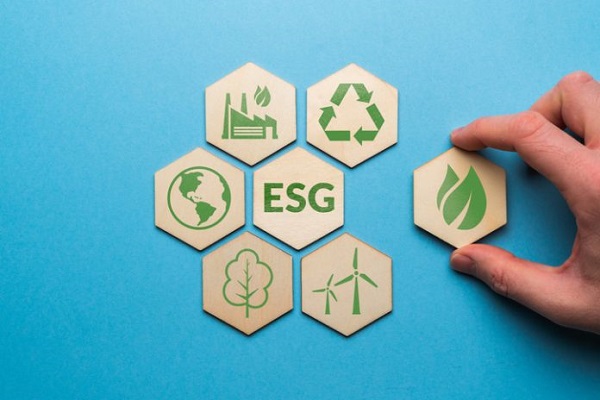
 Business2 days ago
Business2 days agoESG Puppeteers
-

 COVID-191 day ago
COVID-191 day agoNIH Quietly Altered Definition For Gain-Of-Function Research On Its Website, Former Fauci Aide Confirms
-

 Crime1 day ago
Crime1 day agoThe US Canadian border: Greatest number of terrorist watch list individuals being apprehended at northern border
-

 illegal immigration1 day ago
illegal immigration1 day agoSuspected Terrorists Illegally Entering US Up Over 2,500% Under Biden From Trump Era





